Heading to Nepal’s Everest Base Camp in 2024, my biggest worry wasn’t the tiny landing strap at Lukla airport or the >5,000m elevations of the trek. It was gluten. What would I eat as a celiac. How many snacks should I bring? What if I got gluntened along the way?
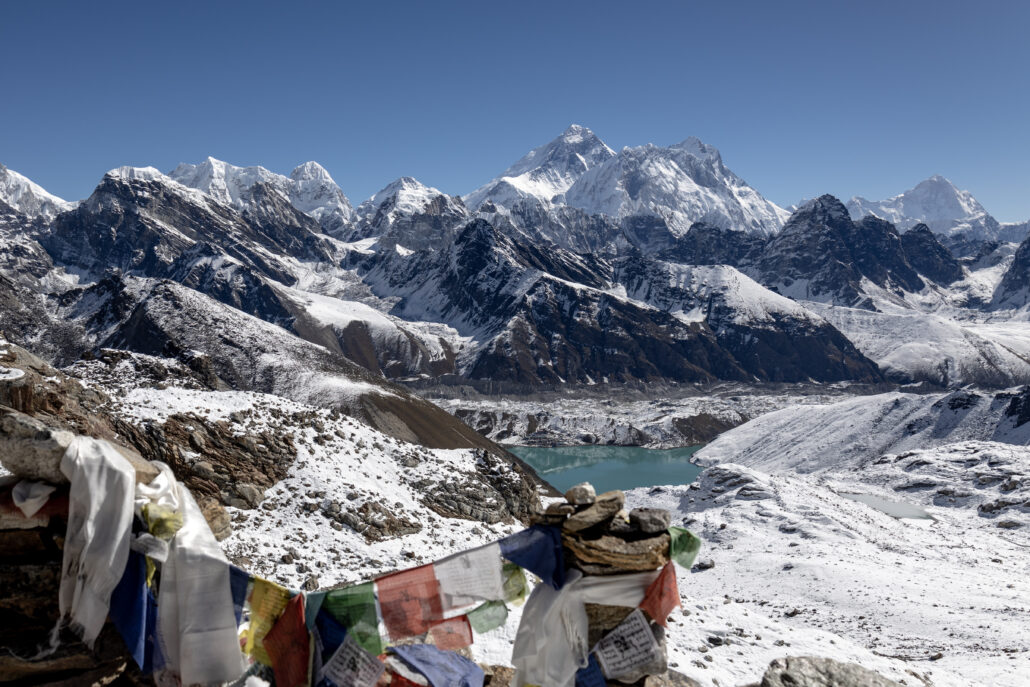
Disclaimer: As a Celiac, gluten free isn’t a choice — it’s a requirement I’d love to not have. My immediate symptoms are thankfully relatively minor, but obviously I aim to avoid any & all gluten and cross-contamination just the same. This post is simply my personal experience: places may change and your risk tolerance / reasons may differ from mine. If you are GF for a medical reason, follow your doctor’s advice and always confirm before eating!
To cut to the chase: traveling gluten free in Nepal was manageable, even if not completely worry-free. I’ve put together my experience and some tips to help prepare for your visit.
Table of Contents
- Eating gluten free in Kathmandu
- Guides for a gluten free Trek
- gluten free Meals on the Everest Base Camp Trail
- Meal Safety Tips
- Snacks & Supplements to Bring
Eating Gluten Free in Kathmandu
For most of us trekkers, the journey begins in Kathmandu, a slightly chaotic but wonderful city. Tourists tend to stick to the Thamel district, which is a maze of gear shops, guiding services, small markets, and restaurants. While gluten free is not a common local concern the way it is in say Italy or the UK, there are a handful of great GF options in Thamel.
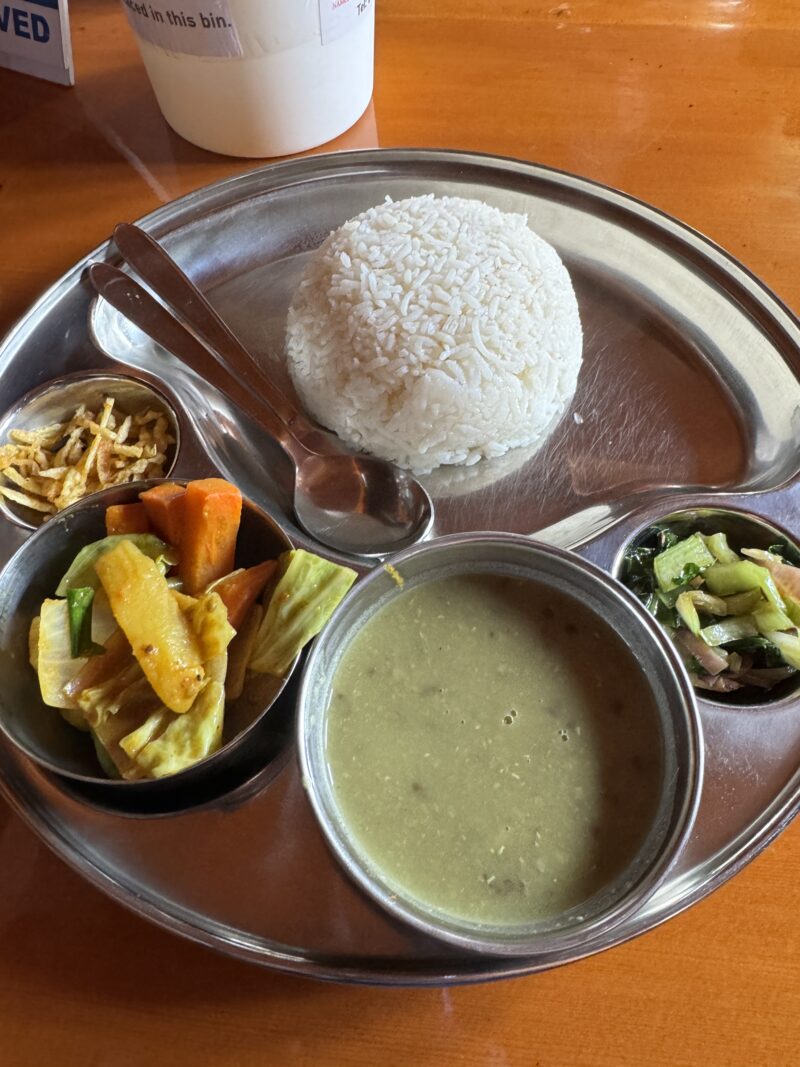
Gluten Free Friendly Restaurants
I had a fairly long stay in the city with enough time to look at every place on FMGF and even branch out further. Here’s what I liked:
- The French Bakery: My favorite! Their gluten free bread was some of the best I’ve had anywhere. They offer sandwiches, french toast, pasta, salads, pastries (shared case with non-GF) and more. The staff is familiar with celiac, and the owner shared a big part of their business is about gluten free travelers though they aren’t a dedicated spot.
- OR2K: Really popular place with a fun vibe that offers several options including gluten free pancakes (so good) and Pad Thai.
- The French Creperie: Another solid option with a small range of GF selections.
- Baskin-Robbins: Many of their flavors are published GF, though you’ll want to double-check cross-contamination risks when ordering.
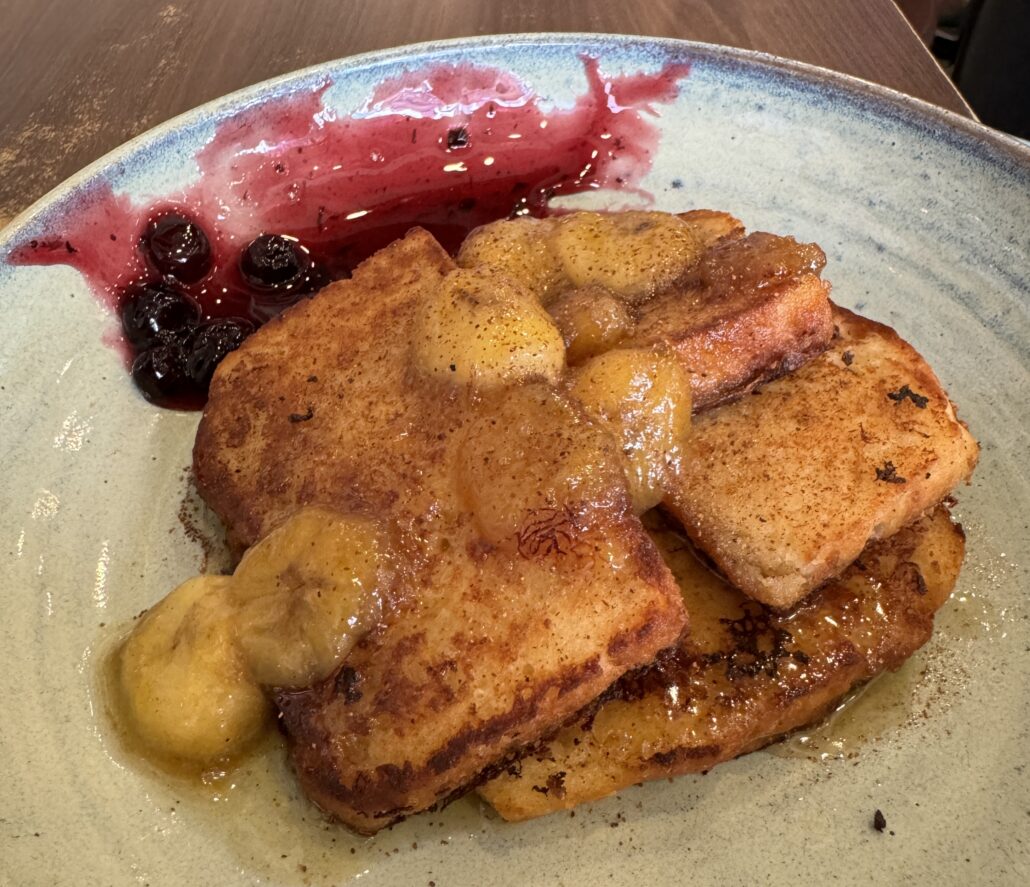
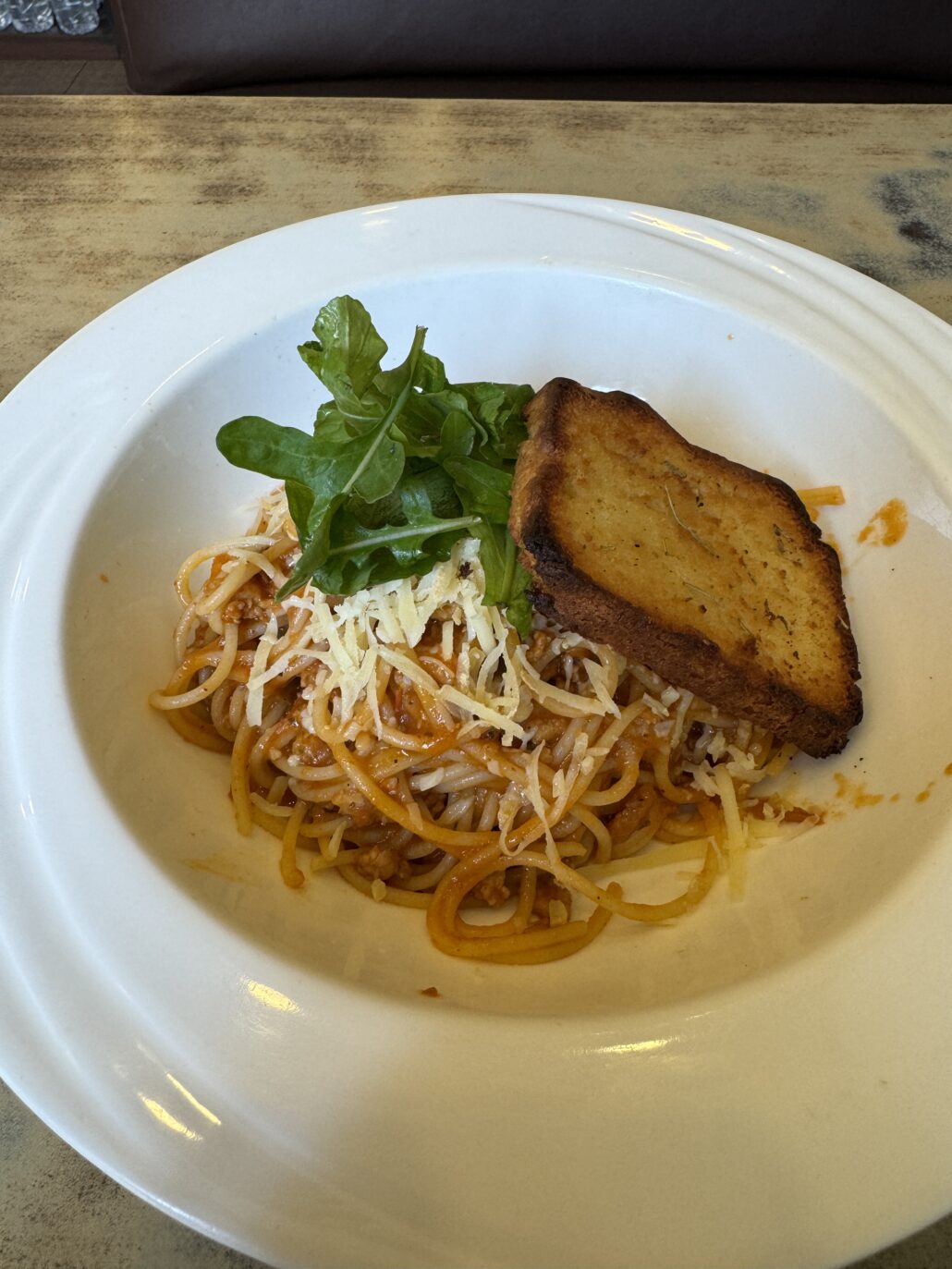
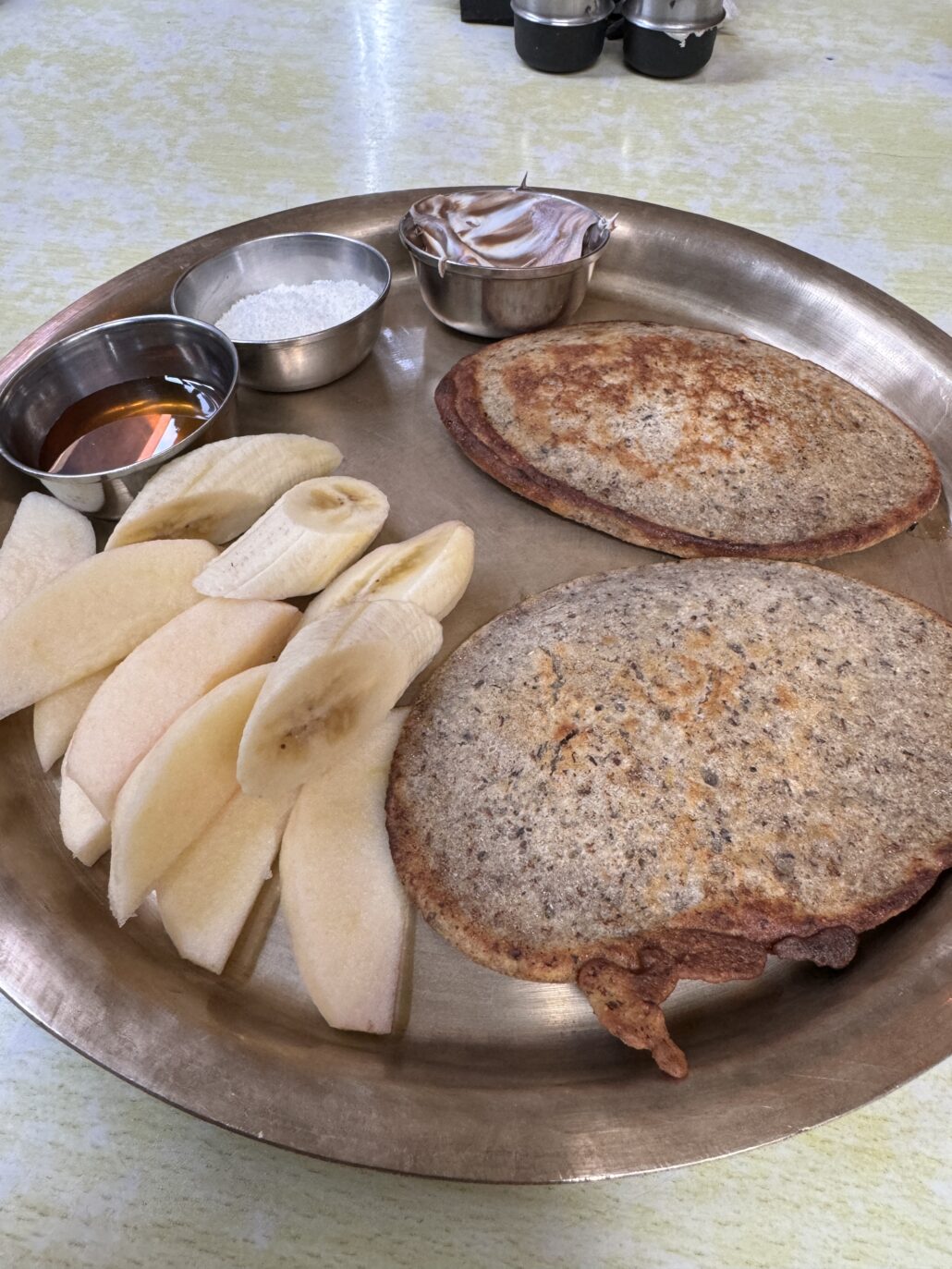
I also ventured away from known spots a few times, though not always successfully. What did work: asking for chicken and vegetables without sauces or dal bhat without bread. What didn’t work: Acai bowls, though I’ve had great luck with them in other places. Boo!
As for snacks, despite the plethora of tourists, selections of packaged items were more limited than I expected. Hunting around different markets including bigger grocery stores outside of central Thamel turned up enough however including Yoga Bars, Snickers*, Bounty, a couple types of Chips, and nuts*. But a wall of protein bars or cereals was not to be found, at least not where I looked.
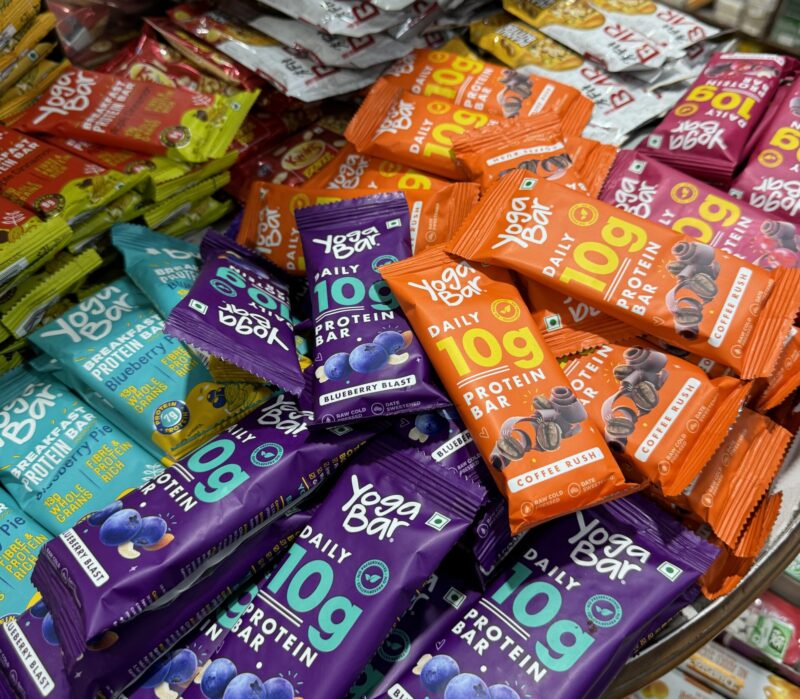
* Check the label, some imports state to “may contain wheat” while others are clear
Guides for a GF Trek
As I understand it, guides aren’t technically required for trekking to EBC currently. While the debate over guided vs. unguided treks rages on in forums, for me, the choice was easy: I’d go with a guide. Yea, I’ve got a lot of hiking experience but being with someone who would help navigate the trail & the altitude, sort the logistics, and aid with my celiac concerns made the decision easy. In hindsight: absolutely glad I made that call.
There are plenty of guiding companies, some well known, some a guy handing out his card on the street. I ultimately chose Highland Expeditions. Most critical to me was their communication (including around gluten free) and general professionalism in their program. I also liked that they run expeditions for much more demanding climbs rather than “maxing out” at EBC and their “vibe” fit what I was looking for.
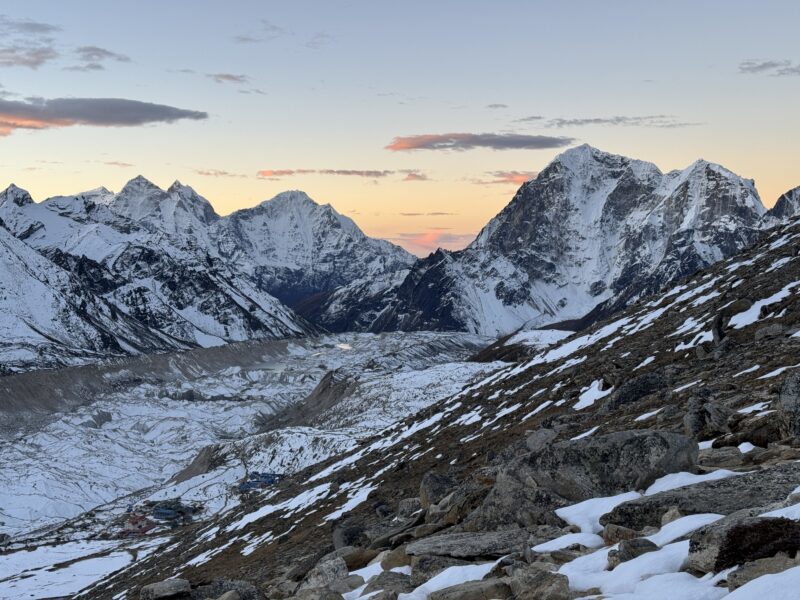
After settling into Kathmandu, I met with Highland’s director, Passang Tsering Sherpa, and my guide, Jeet, for a pre-trek briefing. When I’d first contacted them about my dietary restrictions, they were not concerned but recommended packing extra breakfast meals, as they felt tea house options would be limited for celiacs. At the meeting, they confirmed I’d done so and reassured me that finding gluten free food wouldn’t be an issue during the trek.
Jeet and I went through the usual, what gluten free means for a Celiac talk to wrap up, as he’d be the one communicating with tea house kitchens throughout the trek far better than I could. And before I knew it, I was leaving behind Kathmandu’s amazing restaurants and flying to Lukla to begin the journey.
Gluten Free Meals on the EBC Trekking Route
I’ve hiked a lot—like, a lot—but Nepal’s tea houses were unlike anything I’d experienced. No freeze-dried meals here; instead, fresh, hot food was served three times a day. Jeet was aggressive in making sure I kept up my eating — an uphill battle when you’re burning thousands of calories daily and dealing with the appetite destroying effects of altitude.
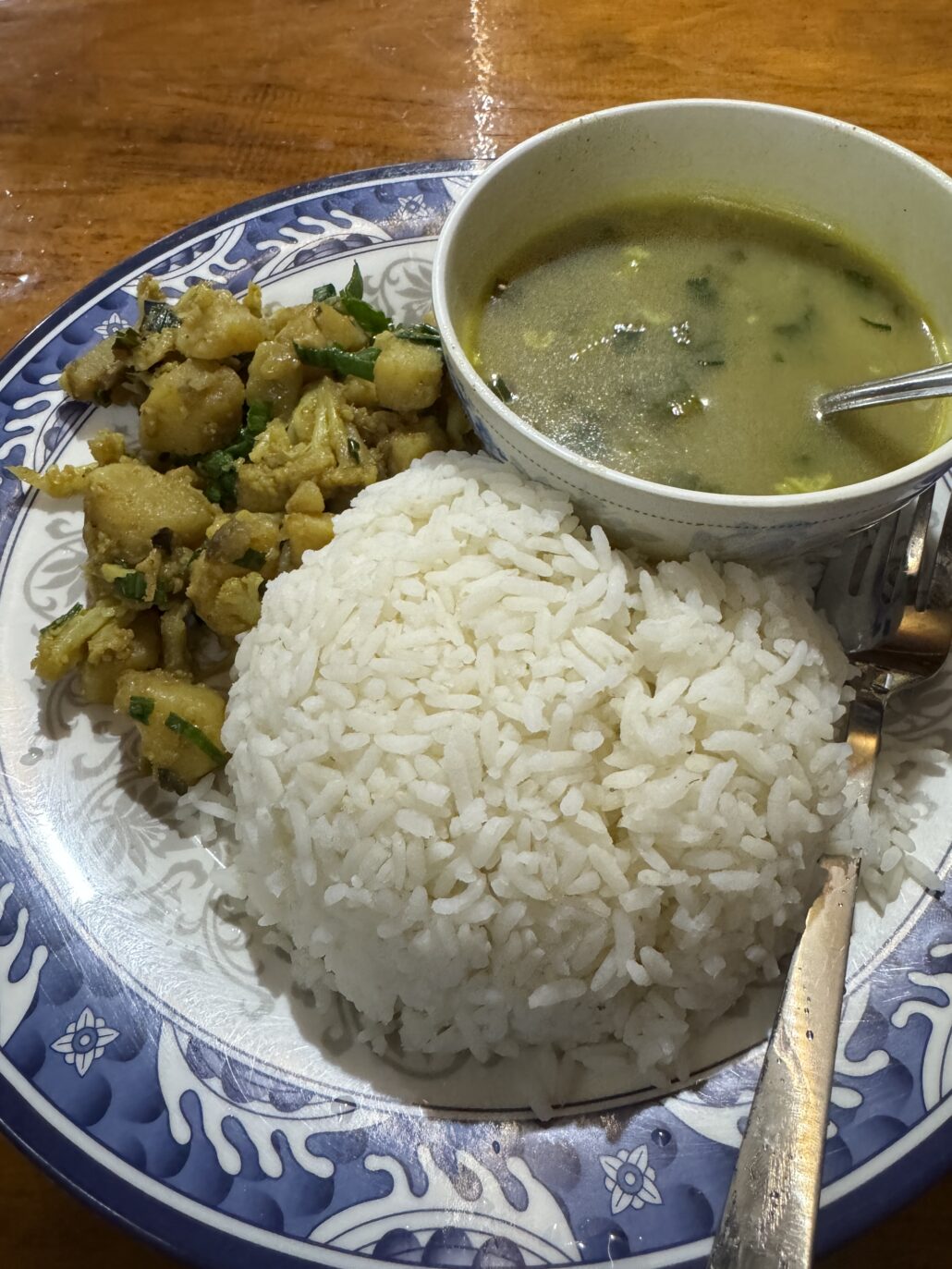
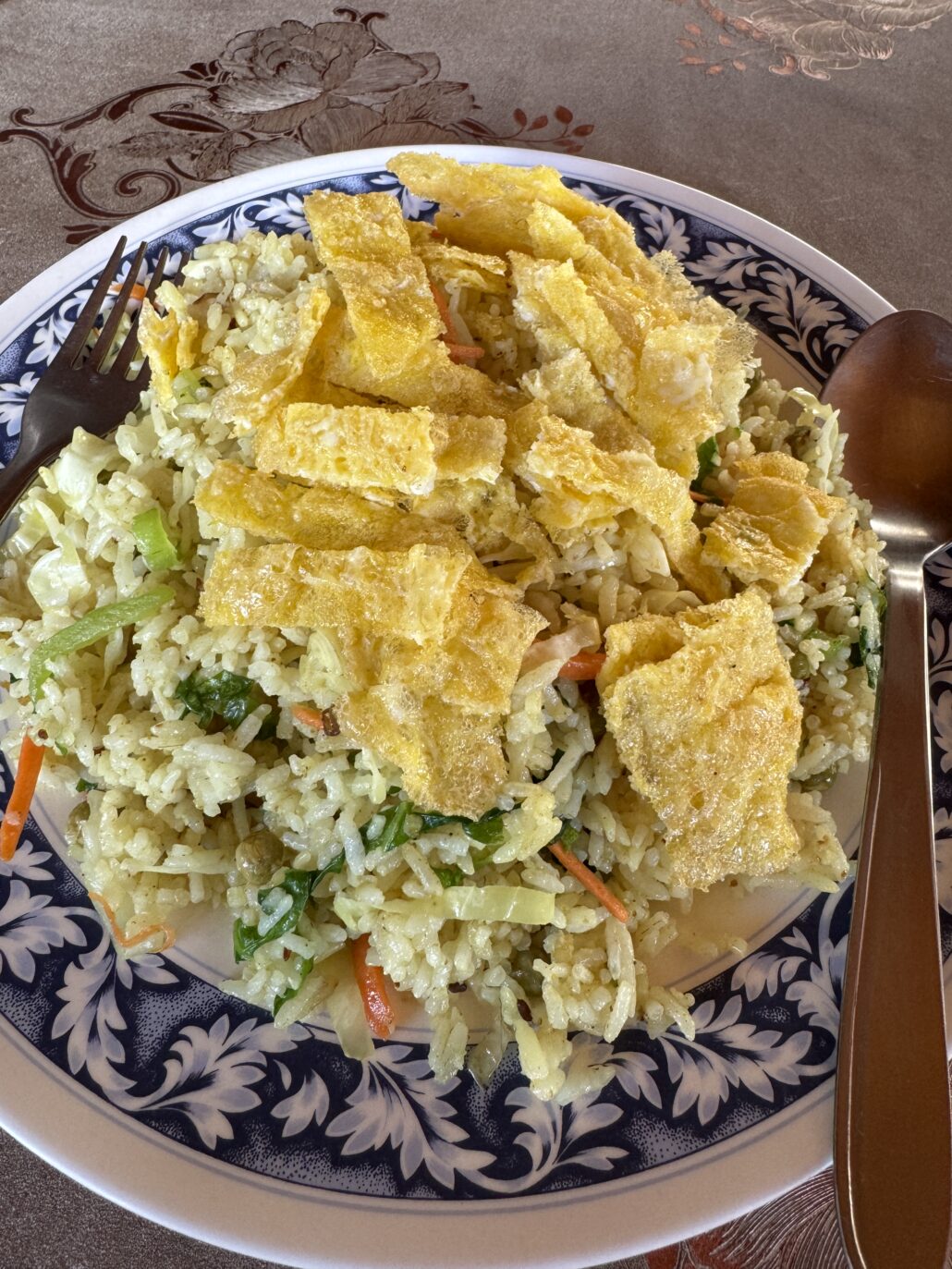
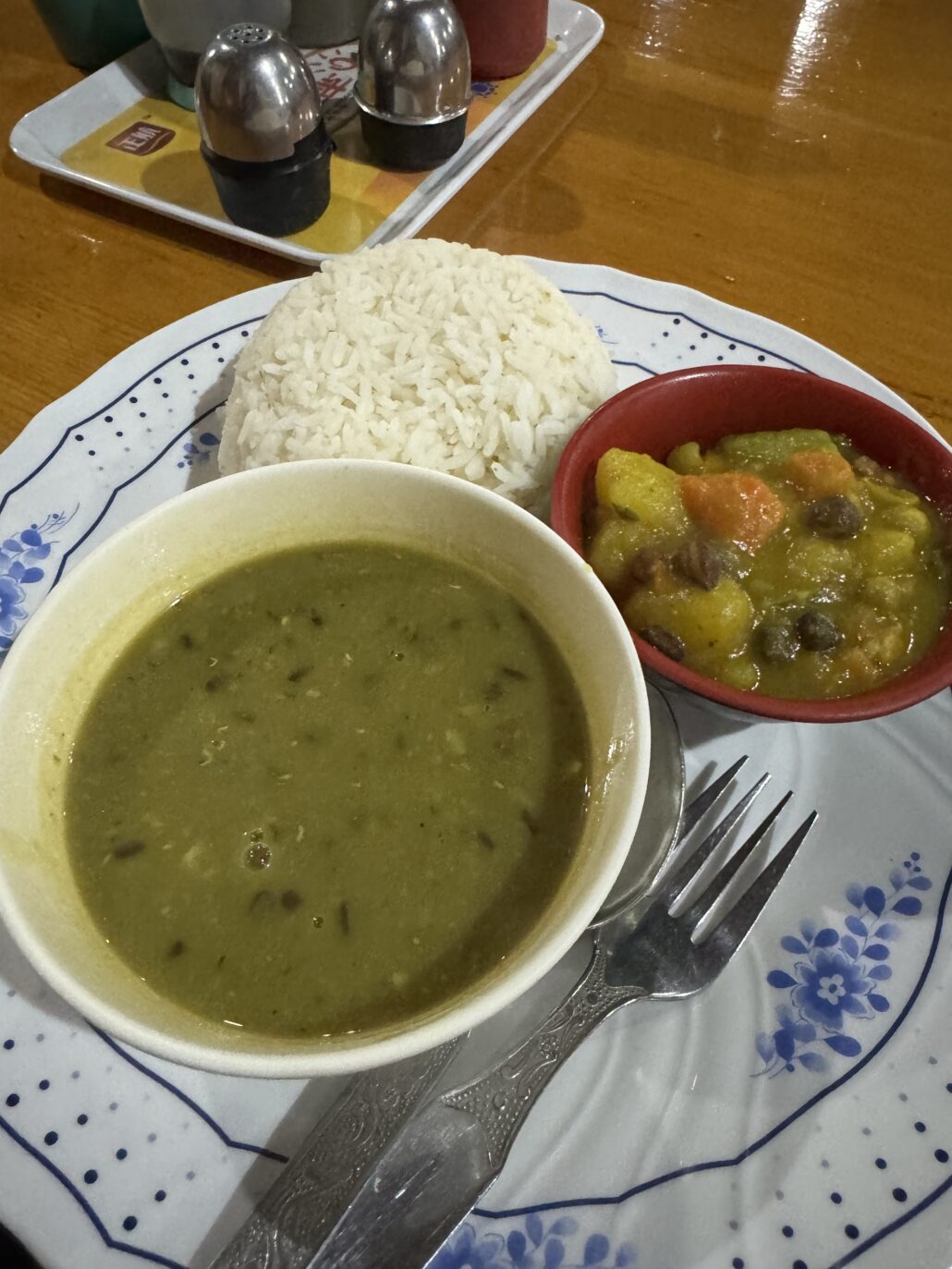
In the Khumbu (Everest) Region, everything is carried village to village by porters or animals, limiting the range of options (side note: what gets carried up to build, maintain and stock the trek route for us tourists is simply astounding and I cannot admire and thank the locals who make this possible enough). This means that most trekkers avoid meat as it’s awfully hard to keep safe, especially as you go further up the trail. Thankfully however, many villages along the trek route raise chickens for eggs and grow a range of vegetables, so meals were not only plentiful but remarkably fresh.
At each tea house, I’d sit down over tea and order from a menu (yes, even at Gorakhshep, 5,164m, someone had hauled up laminated menus), confirming with Jeet if I had any concerns about the gluten in a particular dish. Despite the remote setting, the menus were surprisingly diverse and I was able to work out a handful of Celiac-appropriate options:
- Dal bhat (skipping the bread) of course.
- Vegetable fried rice (no soy sauce, though it’s rarely used).
- Roast or fried potatoes with vegetables and eggs.
- Plain omelets, vegetable omelets, or fried eggs.
- And as many snickers or bounty bars as I was up for, yay calories!
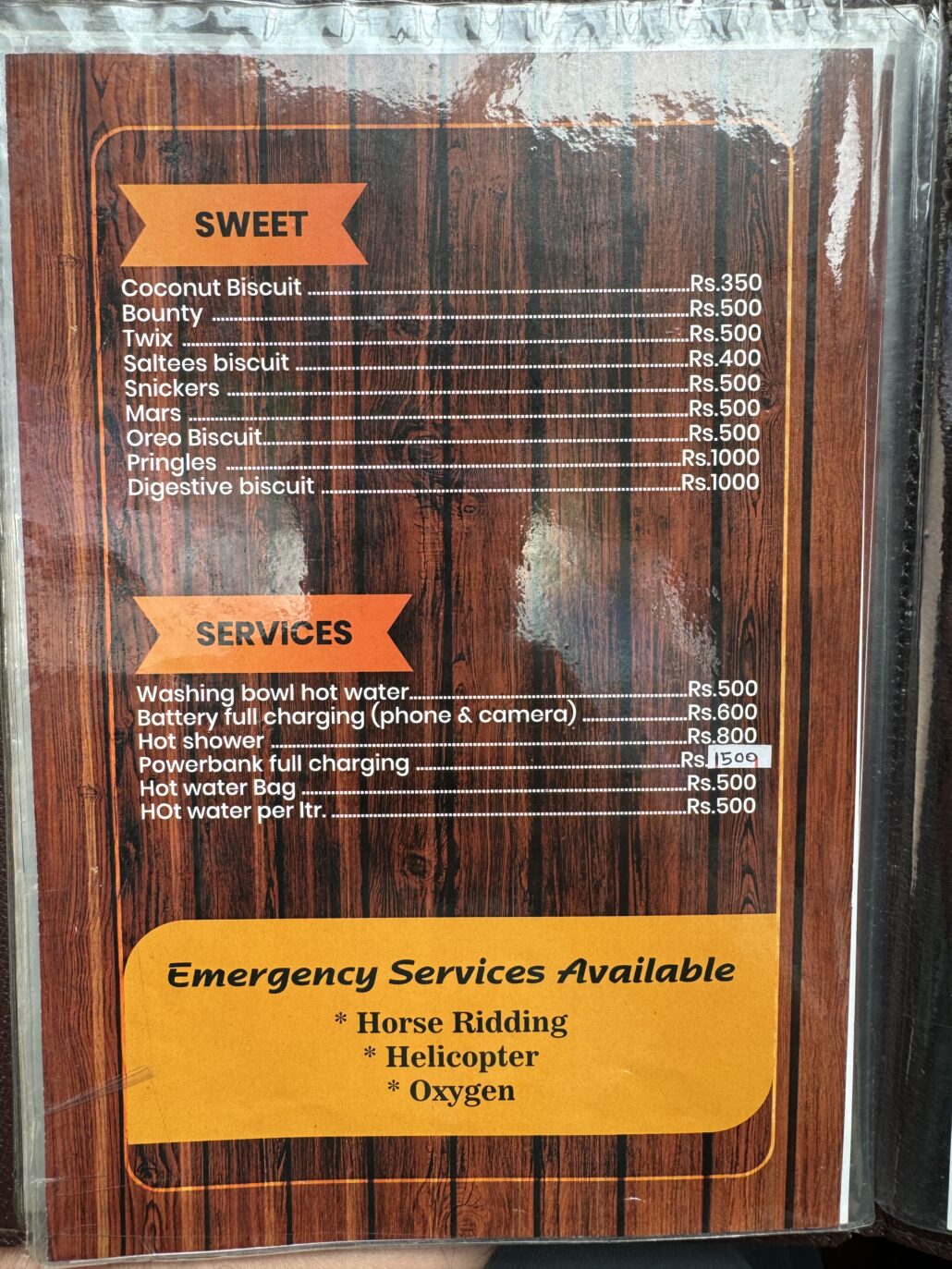
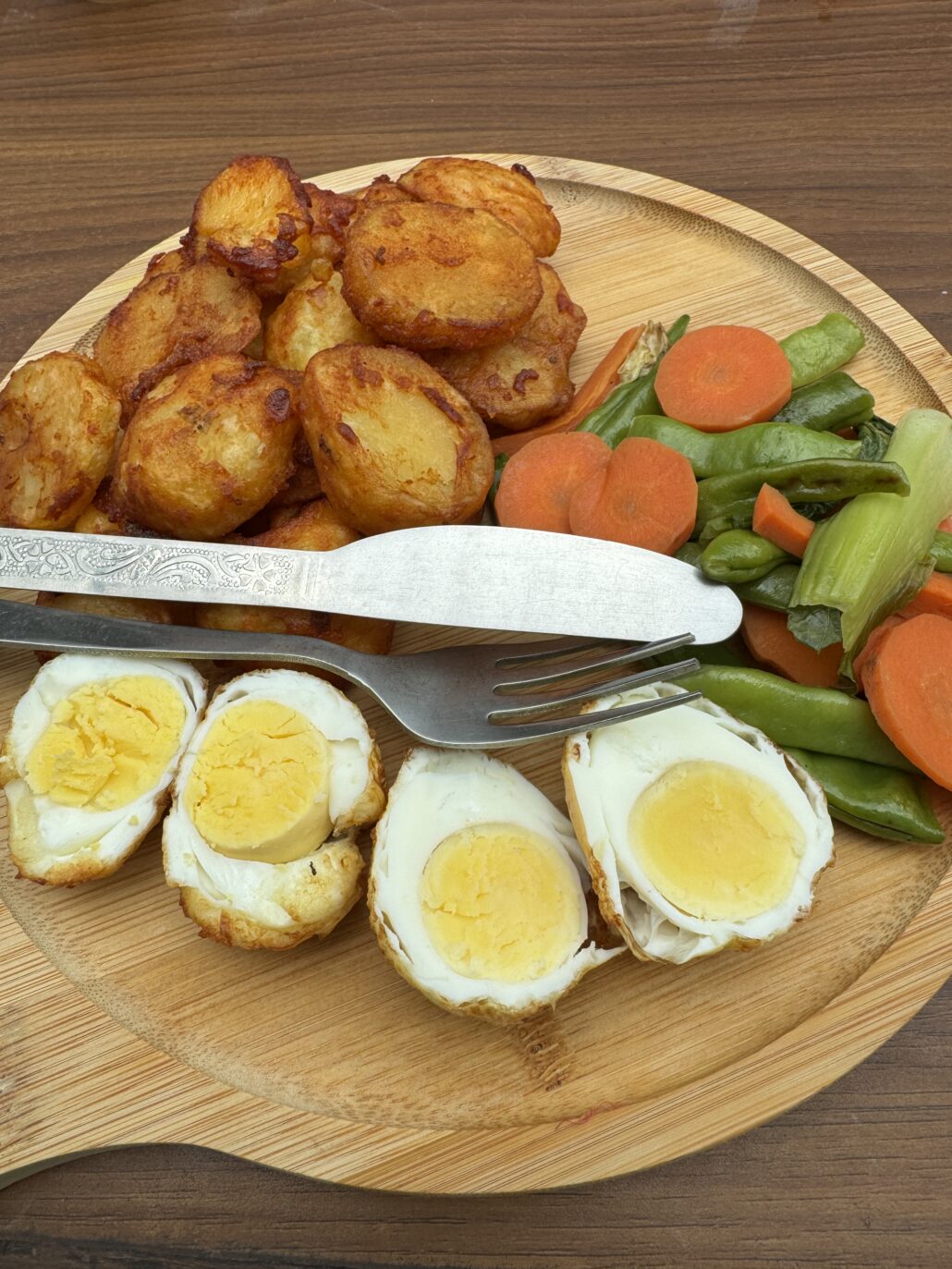
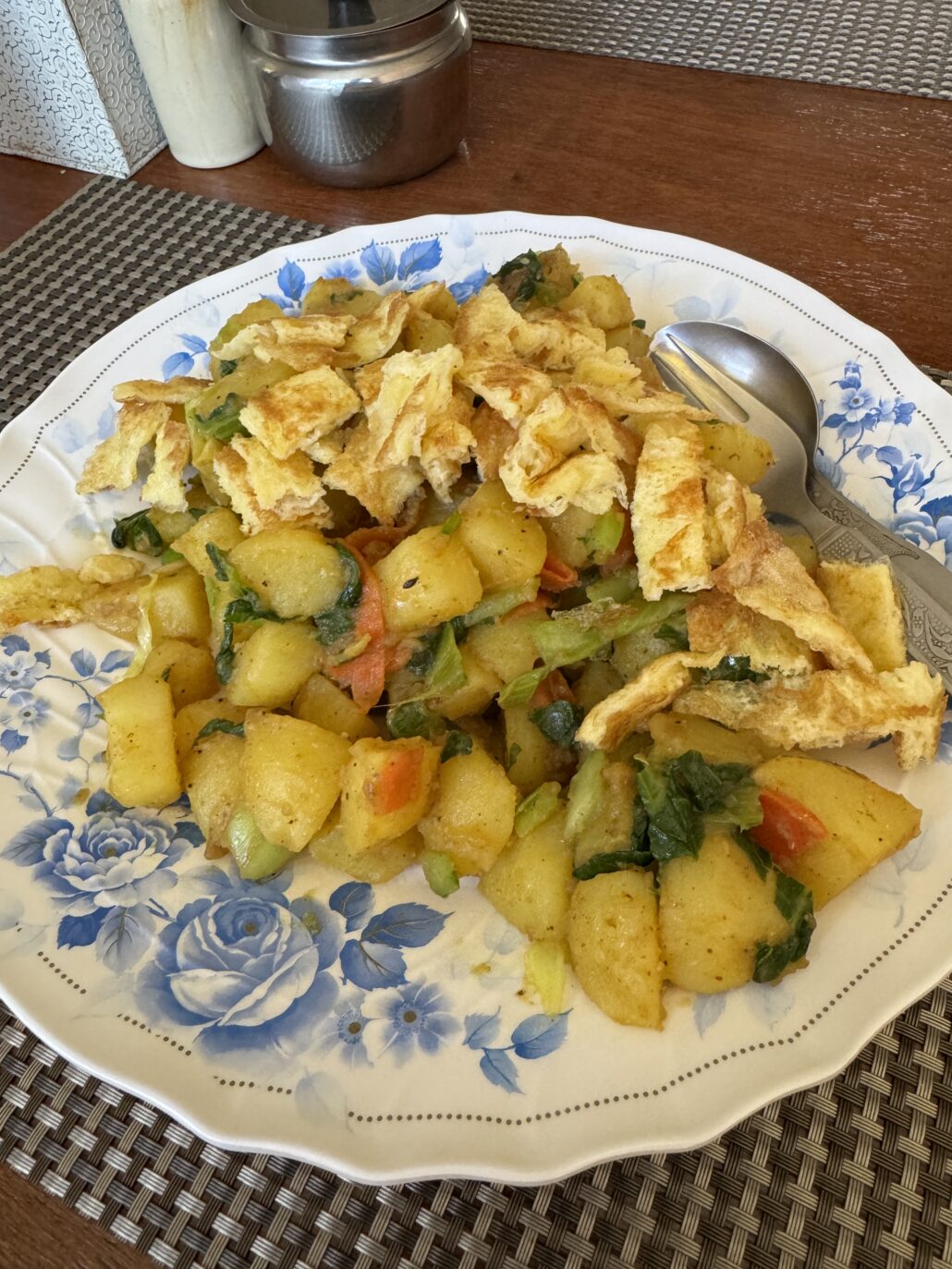
To be clear, irrespective of food intolerances, allergies, and preferences, Dal Bhat is the staple food not just of the Nepali, but of trekkers at large once you hit the trail and certainly after Namche Bazaar (the big town on the trek route). The famous phrase said over and over again is “Dal bhat power, 24 hour, no toilet, no shower” referring to the value of the meal and limited side effects for those who religiously stick to it versus venturing into more questionable dishes. I had so much Dal along the trek that I miss it now and keep looking for local spots!
How exactly the Dal Bhat is made varies from place to place so even eating it routinely is never really eating the same exact thing.
While the menu was more than just Dal, even for someone staying gluten free, by the end of the first week, fatigue set in — not just for me, everyone I met at meal time later on the trek talked about it. Even as I envied their pancakes and pasta, repetition hit us all and that’s coming from someone who eats the same meal most days at home. Having just a few alternatives in my bag was a huge help to break that up and a few more would have been even better.
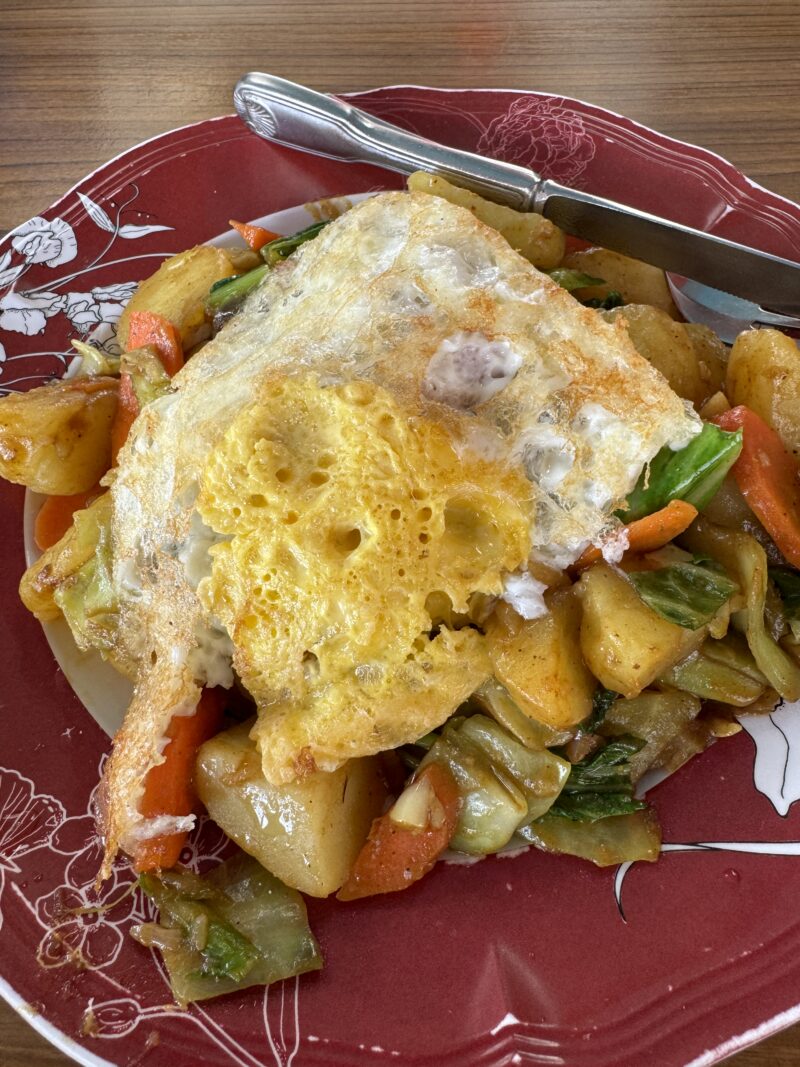
The one gluten free option I did not try (because trust, I tried everything else I could spot) that I did see was buckwheat pancakes. While another celiac I ran into on the trek had done fine with them despite the terrifying name, I was too skittish about trying to sort out if there was mixed wheat. But something I will definitely push on when I return, and I will be back.
Meal Safety
While I couldn’t understand everything (anything) said, I know Jeet would diligently take my order and explain any adjustments to the Tea House kitchen to keep it GF. Still, it’s not as if they had a dedicated protocol or separate cooking areas for gluten free. Small lodges in remote villages with busy kitchens, there is going to be cross-contamination risk.
That said, most meals were prepared individually to order — no large fryers or shared grills — just a wok or pot over an open flame, hopefully rinsed out between dishes. This setup, combined with dishes that are more GF than not, made risks feel manageable. I mean it’s unlikely my potatoes were going to be fried in the pot used for pasta.
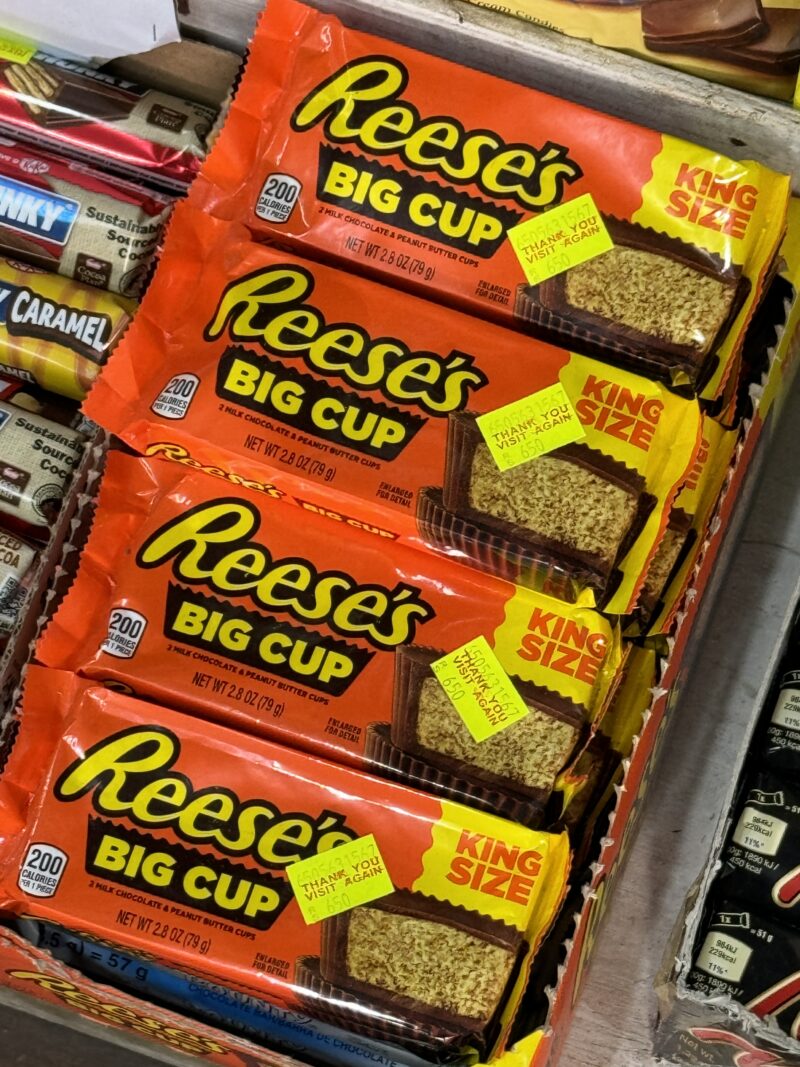
Of course, not every meal was perfect. A few times, my Dal would be coming out with the typical side of bread. Jeet would see me about to speak up, step in and suddenly it would be someone else’s Dal order while he presumably explained to a bewildered cook that just taking off the bread wasn’t enough – I could wait on the next one. Having a guide who understood the importance of GF was absolutely invaluable and as always, being attentive myself.
Over the entire trek, I had only one day of GI symptoms (my usual gluten-tell), early on while at Namche. While I immediately worried it was glutenening, and how would I do this for 3 more weeks, it could just as easily have been a mistake with my water treatment process, effects of altitude, new medication, a snack I bought (Namche is the biggest town on the trek) or just a bad meal. But it soon passed and I had no other issues at all.
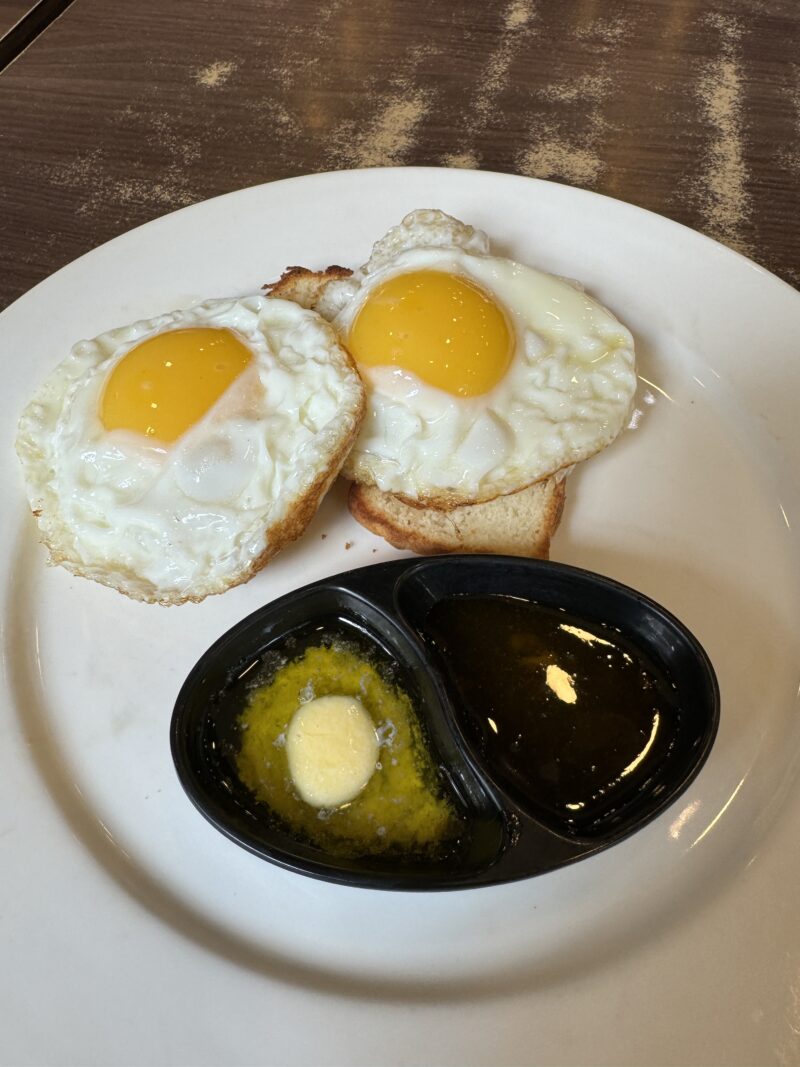
Not that a lack of symptoms means a lack of gluten exposure of course but it’s the best indication I’ve got.
All this is to say, you can absolutely be gluten free in Nepal but, unless you carry in all your own meals, there’s going to be some risk for Celiac level safety. However, given the local diet, cooking methods, and being careful when ordering, for me, those risks felt as well contained as about any shared environment. And honestly, what risk did exist felt minor compared to the inherent hazards of trekking at 3,000–5,000 meters in remote terrain.
Snacks & Supplements to Bring
Perhaps the biggest issue I actually did face, and it was very, very small, was the lack of GF snacks to purchase. The guided approach is all about meals. My hiking style is all about snacks, especially at altitude.
My guides were smart to tell me to augment my food with some safe alternatives and being mindful of my other packing meant I had room to bring some items along. Still, I under did it and if there is one thing I could have changed it would have been more supplementary food. This was even more important on a longer trek as I spent most of my days well off the major EBC path where options are far more limited than around Namche, Dingboche, or Lobuche.
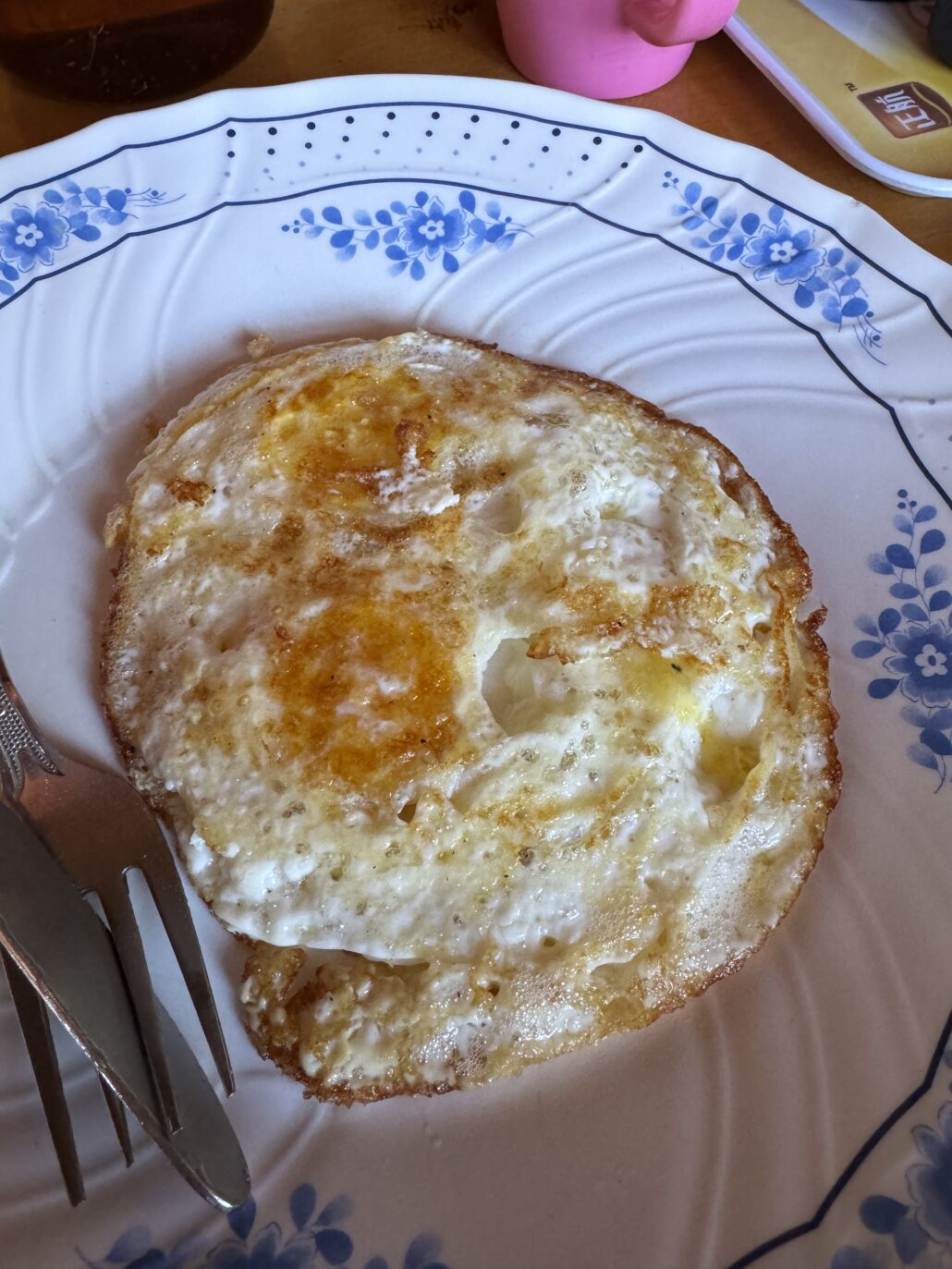
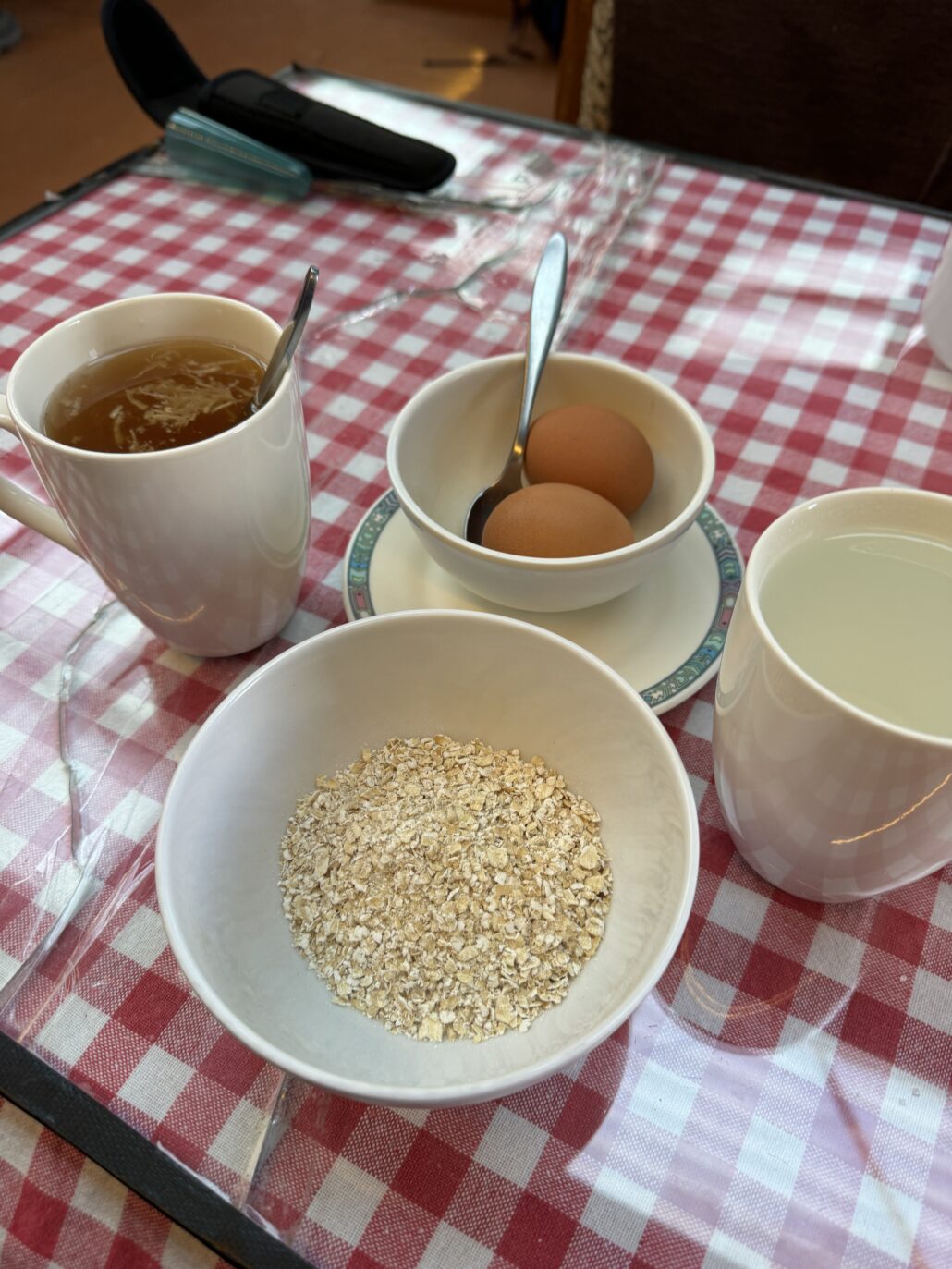
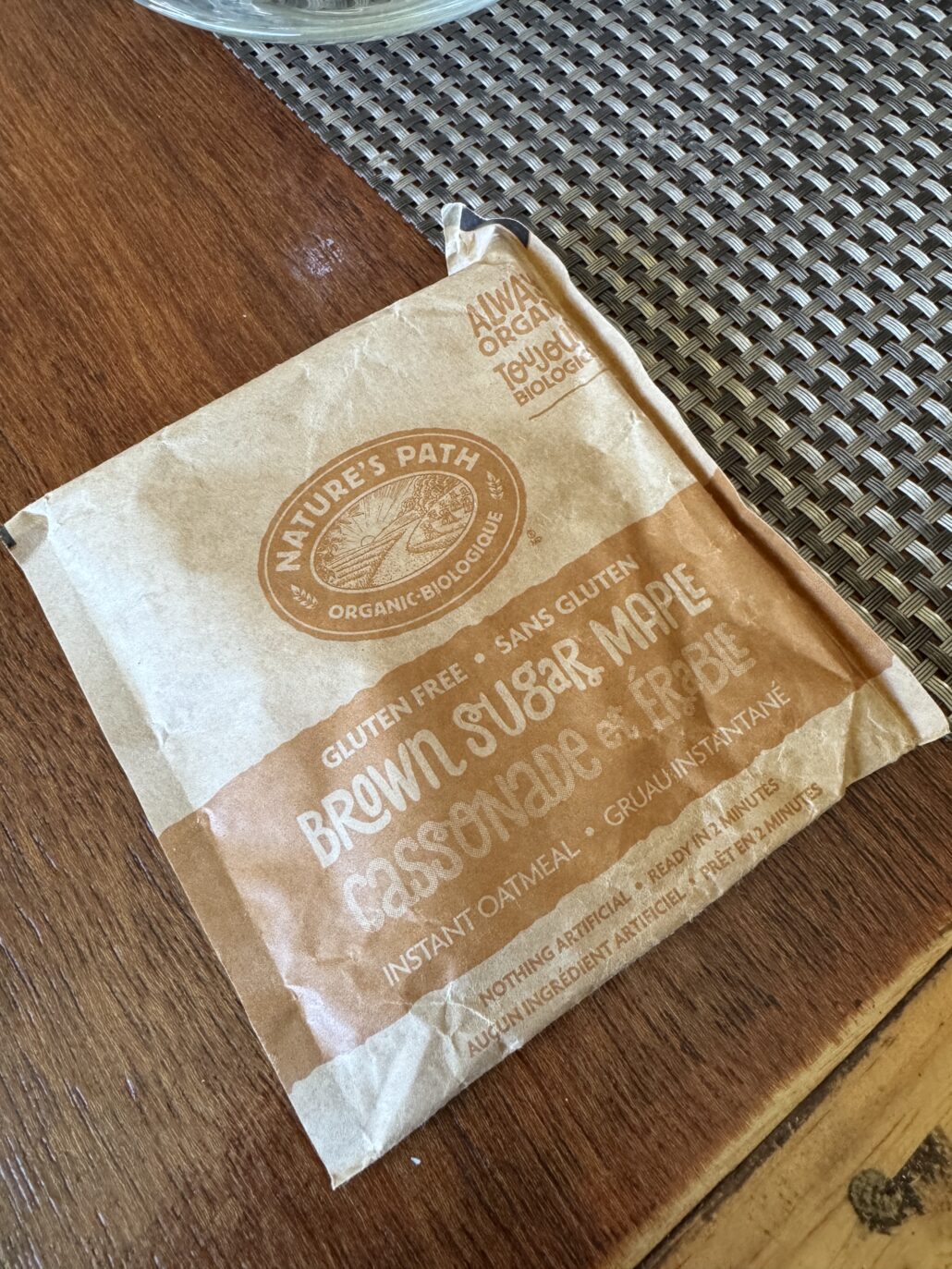
What I Packed:
- Sports Beans: Jelly Belly’s spin on energy snacks (30 packs, used most)
- Gatorade sticks: For added electrolytes and water flavor (60 sticks, used or gave out all)
- Nature’s Path GF Oatmeal: Great for breakfast and a carb feel (20 packets, used ~5)
- Freeze-dried meals: Backup for emergencies or “give me carbs” cravings (4, used 2)
- Multi–vitamins: Absolutely essential, especially if you face Iron or other deficiencies
- A snickers or bounty that I would buy at the Tea House (for 100-500 Nepali Rupees)
What I’d Add Next Time:
- Single-serving almond or peanut butter packets (I like Justin’s)
- Small assortment of gluten free snack bars to mix up the Sports Beans, avoiding chocolate or anything that melts of course
- Small bags of roasted nuts (hard to process a lot of nuts but worth bringing)
- More range on my freeze-dried meals (say 2x Good to Go’s Pasta Marinara or Pad Thai 2x Backpacker’s Pantry Granola, GF marked)
- A good meal for the airport day from Kathmandu: Delayed flights and one last chance for bread!
- I would also seriously consider hauling along a small container of protein powder. Burning so many calories with such a different diet, muscle loss was very real.
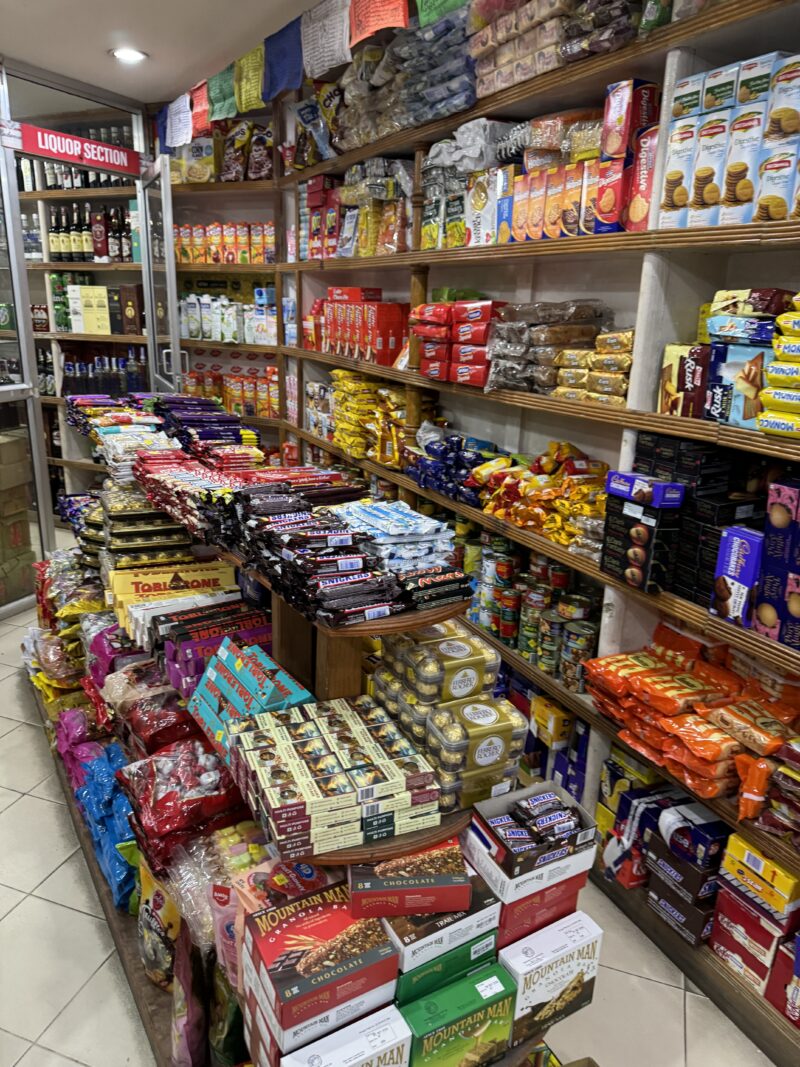
Carrying the Extras Along:
Obviously, weight is a major factor. Without a porter, it would seem unwise to carry much supplemental food, perhaps just the Sports Beans and Gatorade packets for me. As I had the fantastic support of Siman, an amazing porter with Highland Expeditions, and was fine carrying a decent day pack myself while also packing a bit less, I had plenty of room and could have added more food without exceeding my limits.
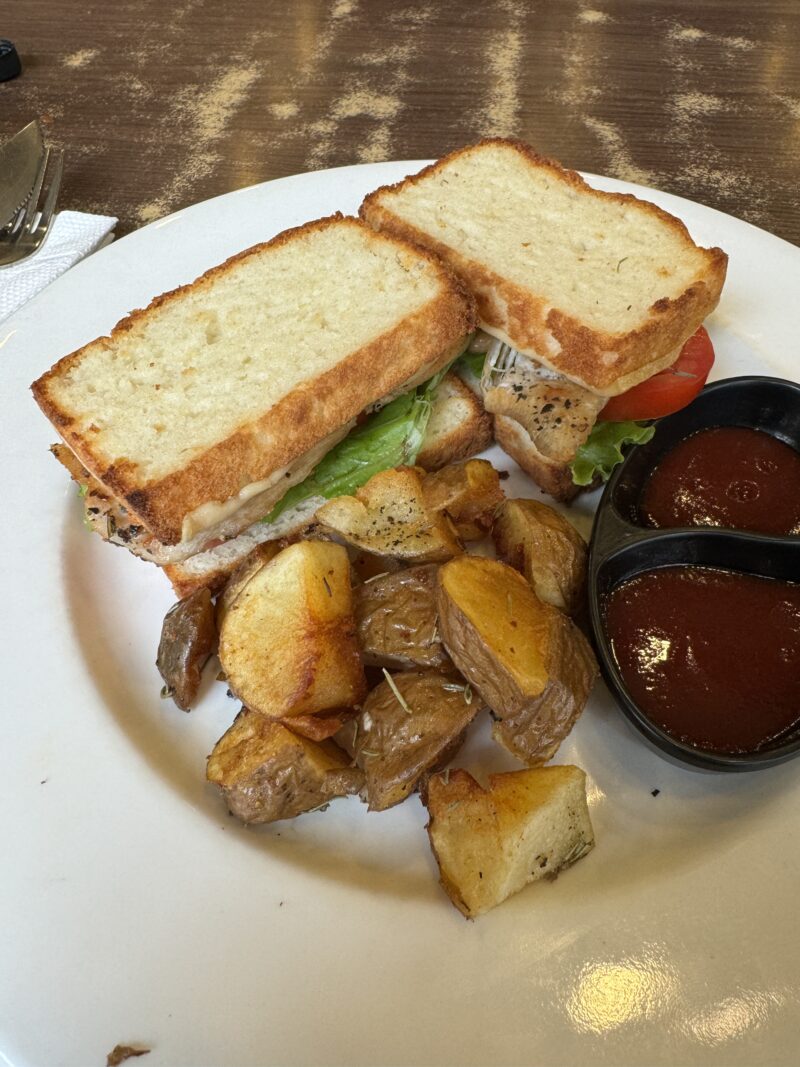
All said, my day pack was 10-13kg, depending on how much of my gear and water I would need for the day while my porter bag about 12-13kg, and decreased slightly as the snacks got used up. Thanks again Siman!
Final Thoughts
In 21 days on the mountain, over the Three High Passes, past Gokyo Lakes, to EBC, up Kala Patthar, and back, I faced one uncertain day of GI discomfort (possibly gluten, possibly not) and plenty of repetitive menu fatigue. And that was it. Totally worth it.
For more reading, I’ve also got a gluten free travel post about flying into Nepal and my airline experiences since you do have to get there.
Have you been to Nepal while keeping GF? Do you have questions? Chime in with a comment below.
What a great recap. I love that you didn’t let your celiac stop you from doing this trek. That’s inspiring!
Thank you Erin! Plenty of apprehension setting out but was absolutely worth the planning and workarounds to make it happen.